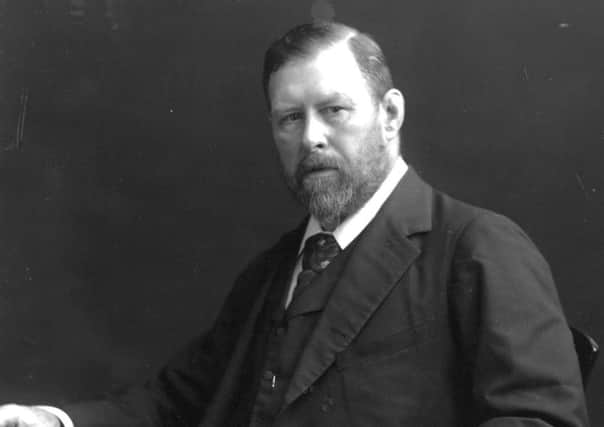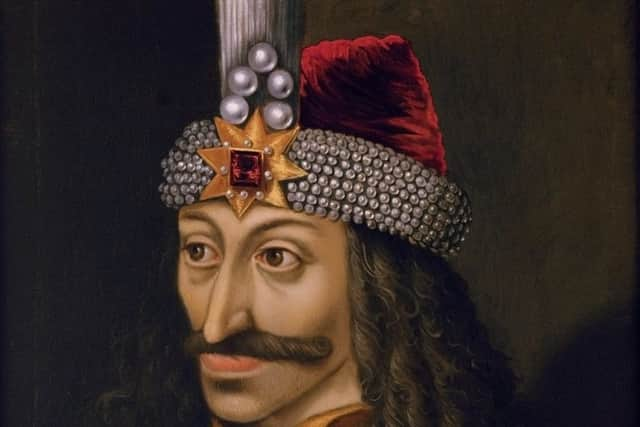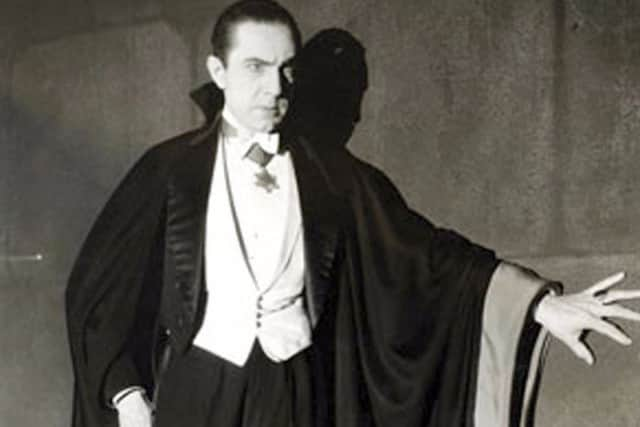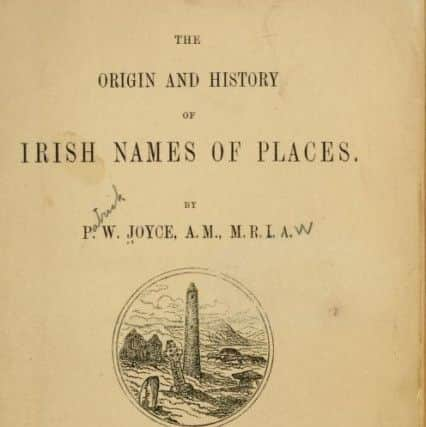The thorn tree in Northern Ireland that maybe marks Count Dracula’s inspiration


A grave in St Mark’s graveyard in Armagh is the last resting place of the family of Lurgan-born poet, painter and writer George ‘AE’ William Russell, who inspired Australian author Pamela Travers to create Mary Poppins.
On November 13, 1926, the now-famous singing nanny, clutching a parrot-headed umbrella, made her first appearance in a short story in a New Zealand newspaper.
Advertisement
Hide AdAdvertisement
Hide AdBert the Match-Man was based on Russell, who left a trail of spent matches wherever he went from constantly relighting his pipe!


Almost three decades previously, in May 1897, a 390-page hard-backed book with a yellow cloth cover was published by Archibald Constable and Company in London.
Stamped on the front and on the spine of the book, in blood-red lettering, was a name that has since brought over a century of fear, terror and nightmares to readers, theatre audiences and cinema goers – Dracula.
And according to a note in Roamer’s mailbox there’s a convincing theory that Dracula’s Dublin-born writer Bram Stoker was inspired, not by a terrible tale from Transylvania, but by an equally blood-curdling legend from Co Londonderry!
Advertisement
Hide AdAdvertisement
Hide AdHopefully a News Letter reader may be able to share a photograph here, but somewhere between Garvagh and Dungiven, in a remote townland called Slaughtaverty, a so-called ‘Giant’s Grave’ marked by a big stone lies in the shadow of a large, twisted thorn bush.


This is Leacht Abhartach, or Abhartach’s Sepulchre, a place that’s abundant with legend and folklore and where there were once a lot more purposefully-placed stones marking its dark secrets.
A theory that Bram Stoker may well have derived his inspiration for Dracula from the legend of Abhartach was mooted nearly 20 years ago by Bob Curran, lecturer in Celtic History and Folklore at the University of Ulster, Coleraine.
Many scholars now back the view that there are strong similarities between the bloodthirsty pursuits of Abhartach and Dracula.
Advertisement
Hide AdAdvertisement
Hide AdDuring the fifth and sixth centuries, the land around Garvagh and Dungiven was one of Ireland’s many small kingdoms, with its local ruler or ‘king’, little more than a tribal warlord, called Abhartach.


According to tradition he was a dwarf, or was deformed in some way, and he was also a powerful wizard as well as extremely evil.
Abhartach demanded bowlfuls of blood from his subjects in order to sustain his energy and was so evil that those over whom he ruled wanted to get rid of him.
But they were too scared to do the deed themselves.
The complete legend was recorded by Patrick Weston Joyce in his Origin and History of Irish Names of Places published in 1875.
Advertisement
Hide AdAdvertisement
Hide Ad“There is a place in the parish of Errigal in Derry, called Slaghtaverty,” wrote Joyce, “but it ought to have been called Laghtaverty, the ‘laght’ or sepulchral monument of the Abhartach or dwarf.”
Joyce recounts the dwarf as being a magician “and a dreadful tyrant, and after having perpetrated great cruelties on the people he was at last vanquished and slain by a neighbouring chieftain”.
The courageous chieftain was possibly named Cathrain or Cathán, thought to be a corruption of O Cathain or O’Kane, still a common name in the county.
According to Joyce, Abhartach was buried standing upright, but the next day he appeared in his old haunts, more cruel, bloodthirsty and vigorous than ever.
Advertisement
Hide AdAdvertisement
Hide AdThe chief slew him a second time and buried him as before, but again he escaped from the grave, and spread terror through the whole country.
The chief then consulted a druid or some kind of a holy-man “and according to his directions he slew the dwarf a third time, and buried him in the same place, with his head downwards; which subdued his magical power, so that he never again appeared on earth”.
In his Origin and History of Irish Names of Places published in 1875 Joyce confirmed that Abhartach’s stone grave or sepulchre “raised over the dwarf is still there, and you may hear the legend with much detail from the natives of the place, one of whom told it to me”.
Other sources and legends say that when the Chieftain Cathrain or Cathán visited the druid or holy-man for advice he was told: “Abhartach is not really alive he has become one of the neamh-mhairbh (the undead). Moreover, he is a dearg-diúlaí, a drinker of human blood. He cannot actually be slain but he can be restrained.”
Advertisement
Hide AdAdvertisement
Hide AdIt’s thought that Bram Stoker knew of these legends, thus the speculation about the similarities between the evil dwarf and Dracula.
And the holy-man is said to have told the chieftain that Abhartach must be killed with a wooden sword and buried upside down in the earth with a heavy stone on top of him.
Should the stone be lifted Abhartach would be free to walk the earth once more!
Once again – echoes of Dracula.
In the summer 2000 edition of History Ireland historian Bob Curran wrote that Bram Stoker “had no great experience” of Eastern Europe or Transylvania.
Advertisement
Hide AdAdvertisement
Hide Ad“He had never been there and was relying heavily on tourist accounts of the region. His experiences may have come more directly from Irish folklore…For all we know Dracula may be lurking just around the corner!”